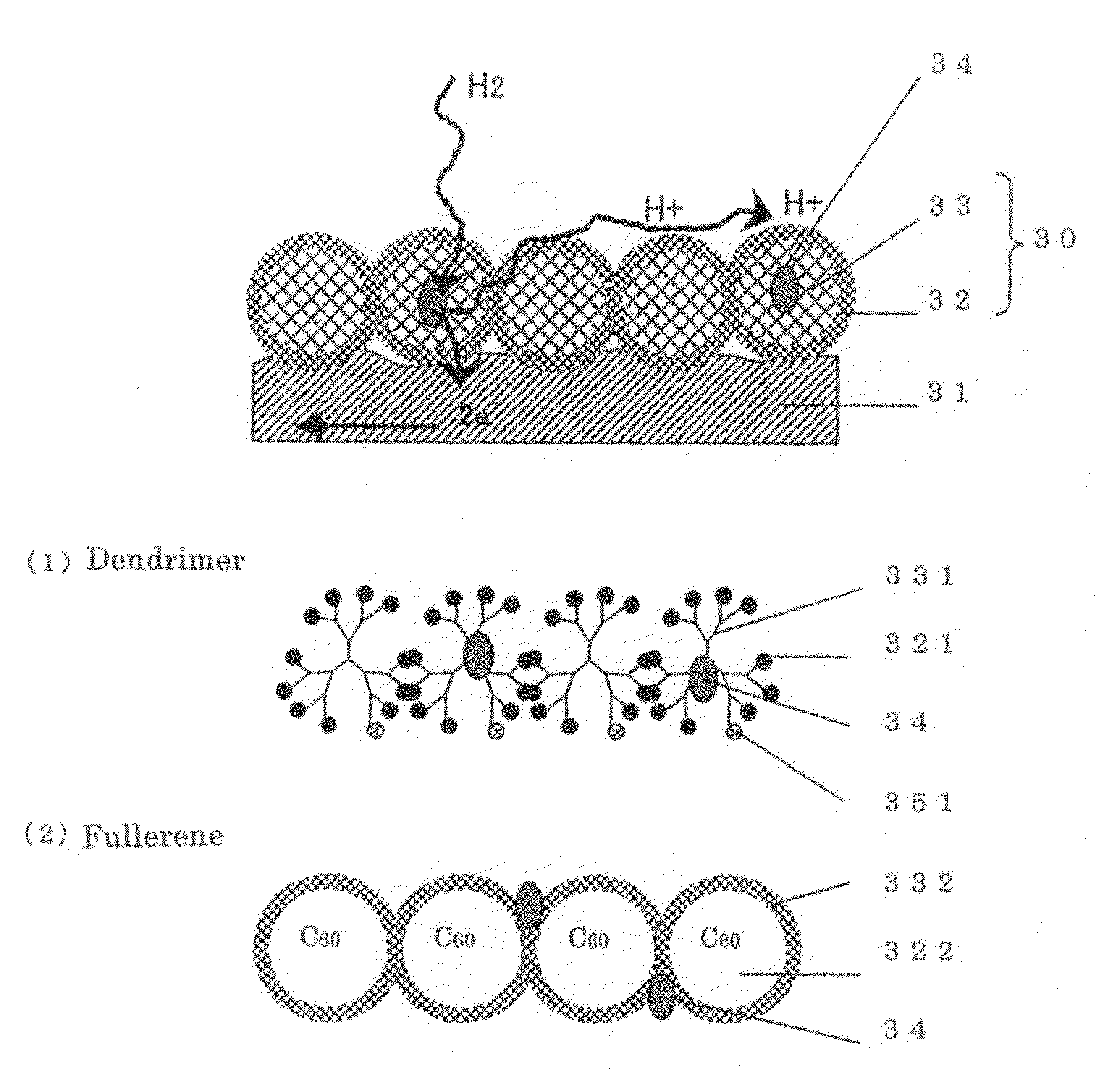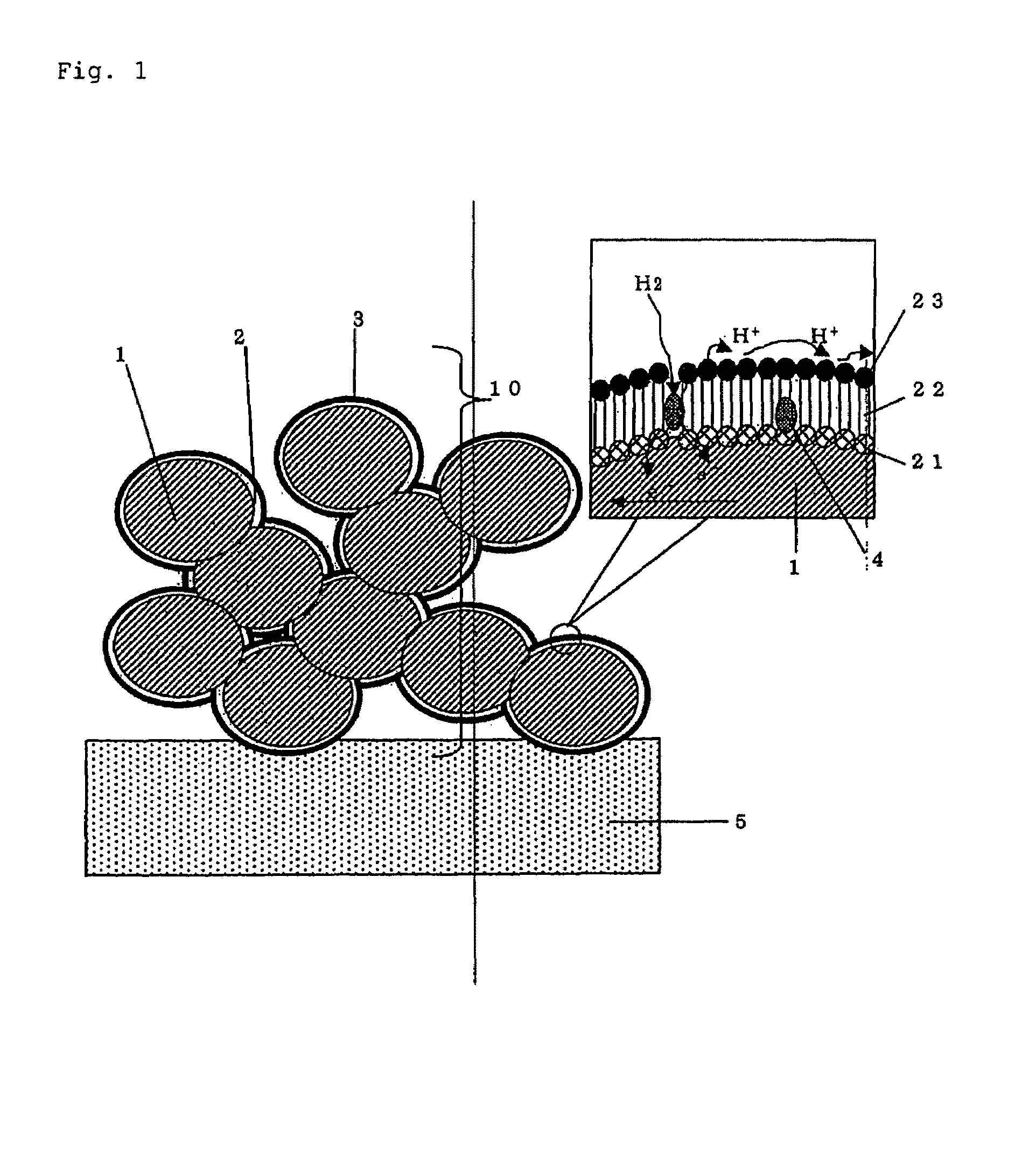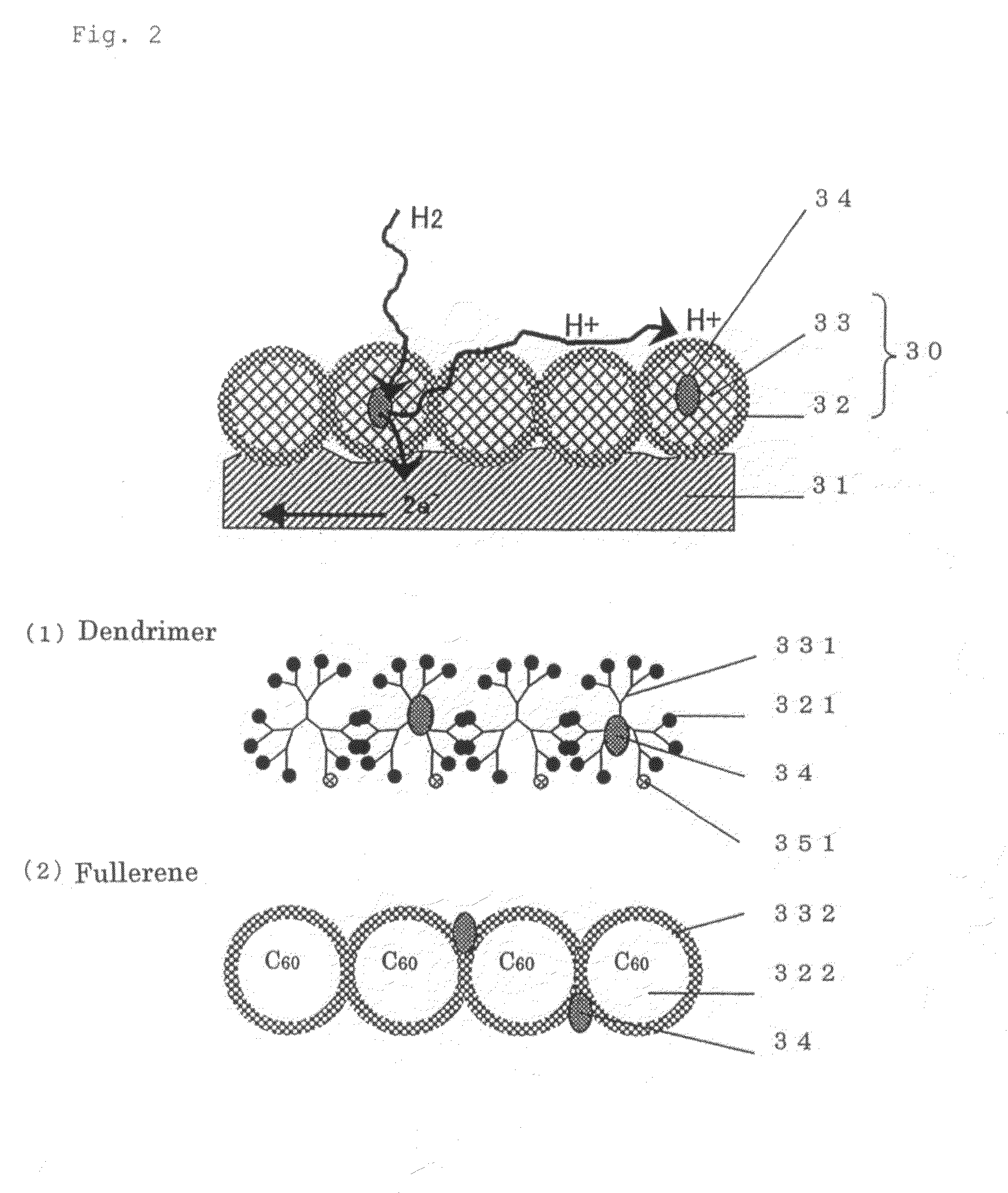Porous electrode, and electrochemical element made using the same
a technology of electrochemical elements and porous electrodes, applied in the field of porous electrodes, can solve the problems of less catalysts being used, increased cost, and inefficient reaction, and achieve the effect of accelerating reaction
- Summary
- Abstract
- Description
- Claims
- Application Information
AI Technical Summary
Benefits of technology
Problems solved by technology
Method used
Image
Examples
embodiment 1
(1) EMBODIMENT 1
[0109]FIG. 1 illustrates an example of an embodiment of the porous electrode of the present invention.
[0110]The porous electrode 10 of the present invention consists of a porous material 1 having electron conductivity and composed of conductive particles. A surface 3 with proton affinity attributable to proton affinity groups 23 is formed on the porous material, via a spacer 2. This spacer 2 is adsorbed to the porous material 1 at a portion 21 (affinity portion) with high affinity to the porous material, and a catalyst 4 in the form of microparticles is contained within this chain monomolecule 22.
[0111]When this porous electrode is used as an electrochemical element, as shown in the example of a fuel cell in FIG. 3, the porous electrodes 10 can be disposed across from each other with a proton-conductive solid electrolyte 5 in between, the electrodes can be connected to an external circuit, and a fuel can be supplied to the electrodes. The catalyst 4 used in the porou...
embodiment 2
(2) EMBODIMENT 2
[0115]The another structure of the surface 31 portion of the porous material having electron conductivity in the porous electrode of the present invention will be described through reference to FIG. 2.
[0116]In contrast with the structure consisted of an organic layer of chain molecules in Embodiment 1, the same advantages can be obtained with a spacer 30 of spherical molecules as in Embodiment 2. The spacer 30 of spherical molecules is composed of a spacer component 33 and a proton affinity group component 32. The microparticles of a catalyst 34 are disposed inside the organic layer or between the spherical molecules.
[0117]A dendrimer of spherical molecules produced by the dendritic growth of a polymer, as well as spherical carbon such as carbon 60 and carbon 70, are preferable as these spherical molecules. These spherical molecules are suited to the object of the present invention because they facilitate the introduction of proton affinity groups or groups with affi...
embodiment 3
(3) EMBODIMENT 3
[0120]Another structure of the porous electrode of the present invention will be described through reference to FIG. 5.
[0121]When the porous electrode is used for an electrochemical element, the porous electrode 10 constituted as shown in Embodiment 1 or 2 is joined to the proton-conductive solid electrolyte 5. The empty space in the porous electrode 10 contributes to the electrode reaction with the catalyst through diffusion of fuel, and also conducts protons at the surface 3. If this space could handle both of the functions discussed above, there would be no need for voids in the porous material. Specifically, tiny voids are produced in a filler space 300 that fills with the spherical molecules having proton affinity groups on their surface. The hydrogen is able to diffuse into these voids, and therefore reaches the catalyst and undergoes an electrode reaction. Also, with this structure, the protons are moved not only at the surface 3, but also in the filler space ...
PUM
| Property | Measurement | Unit |
|---|---|---|
| porosity | aaaaa | aaaaa |
| porosity | aaaaa | aaaaa |
| specific surface area | aaaaa | aaaaa |
Abstract
Description
Claims
Application Information
 Login to View More
Login to View More - R&D
- Intellectual Property
- Life Sciences
- Materials
- Tech Scout
- Unparalleled Data Quality
- Higher Quality Content
- 60% Fewer Hallucinations
Browse by: Latest US Patents, China's latest patents, Technical Efficacy Thesaurus, Application Domain, Technology Topic, Popular Technical Reports.
© 2025 PatSnap. All rights reserved.Legal|Privacy policy|Modern Slavery Act Transparency Statement|Sitemap|About US| Contact US: help@patsnap.com



